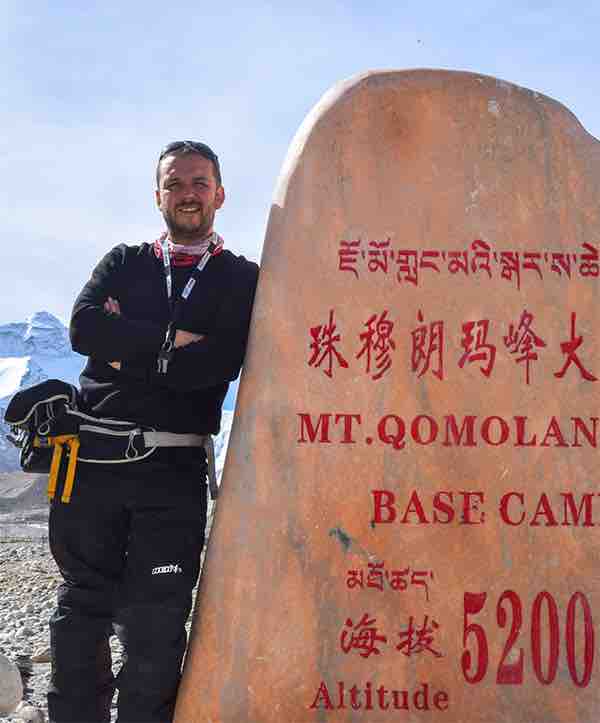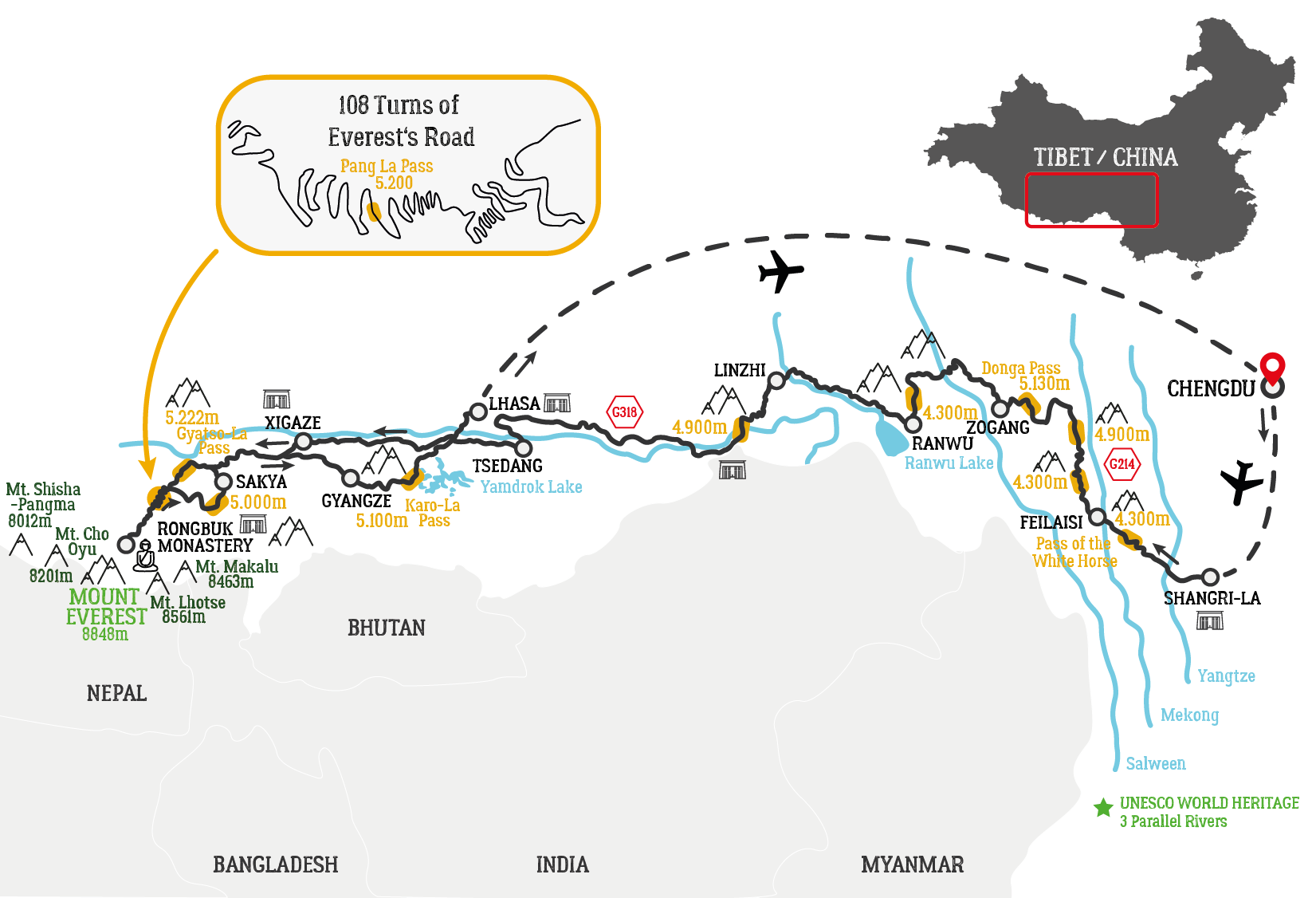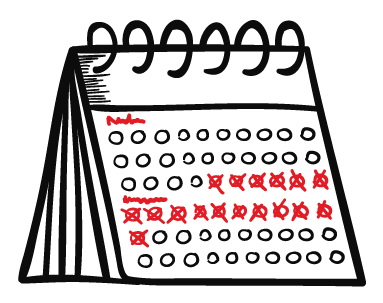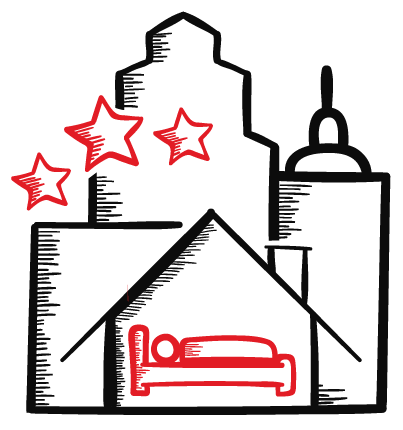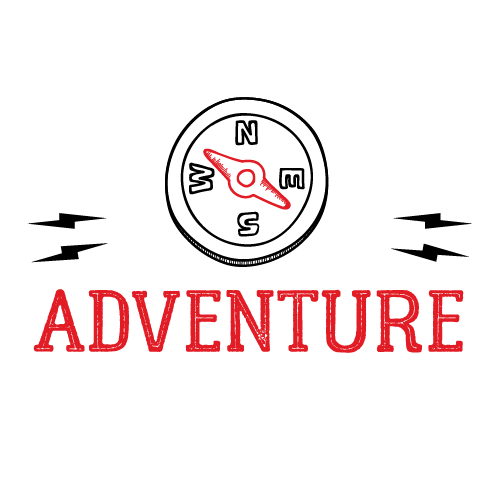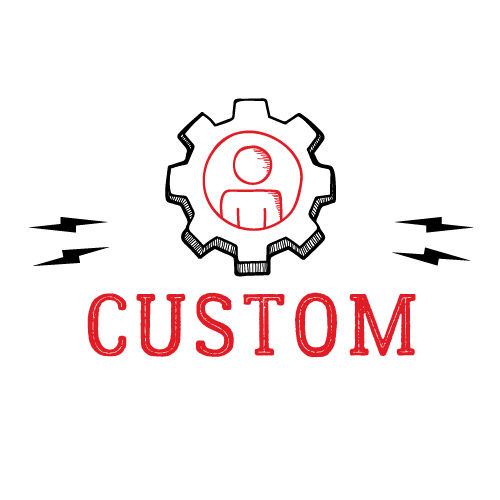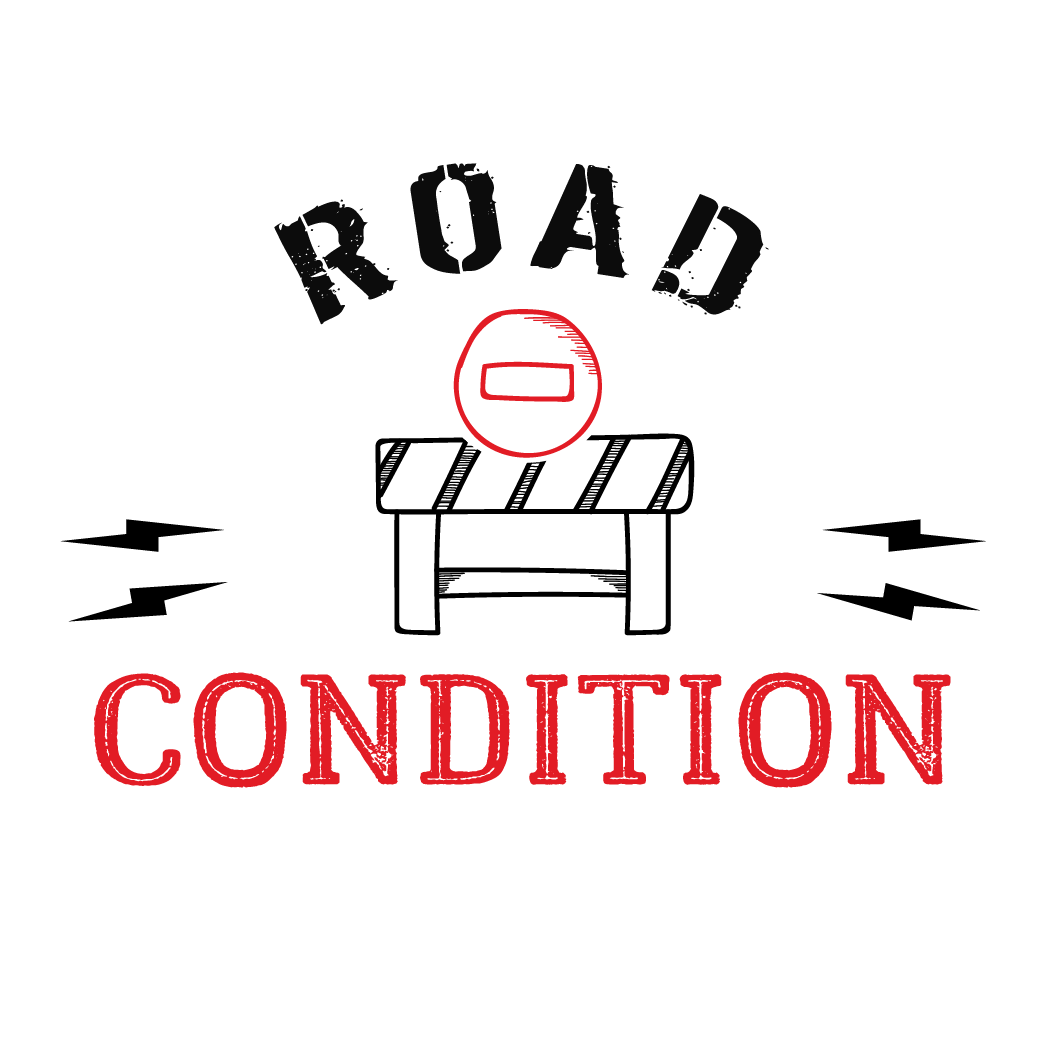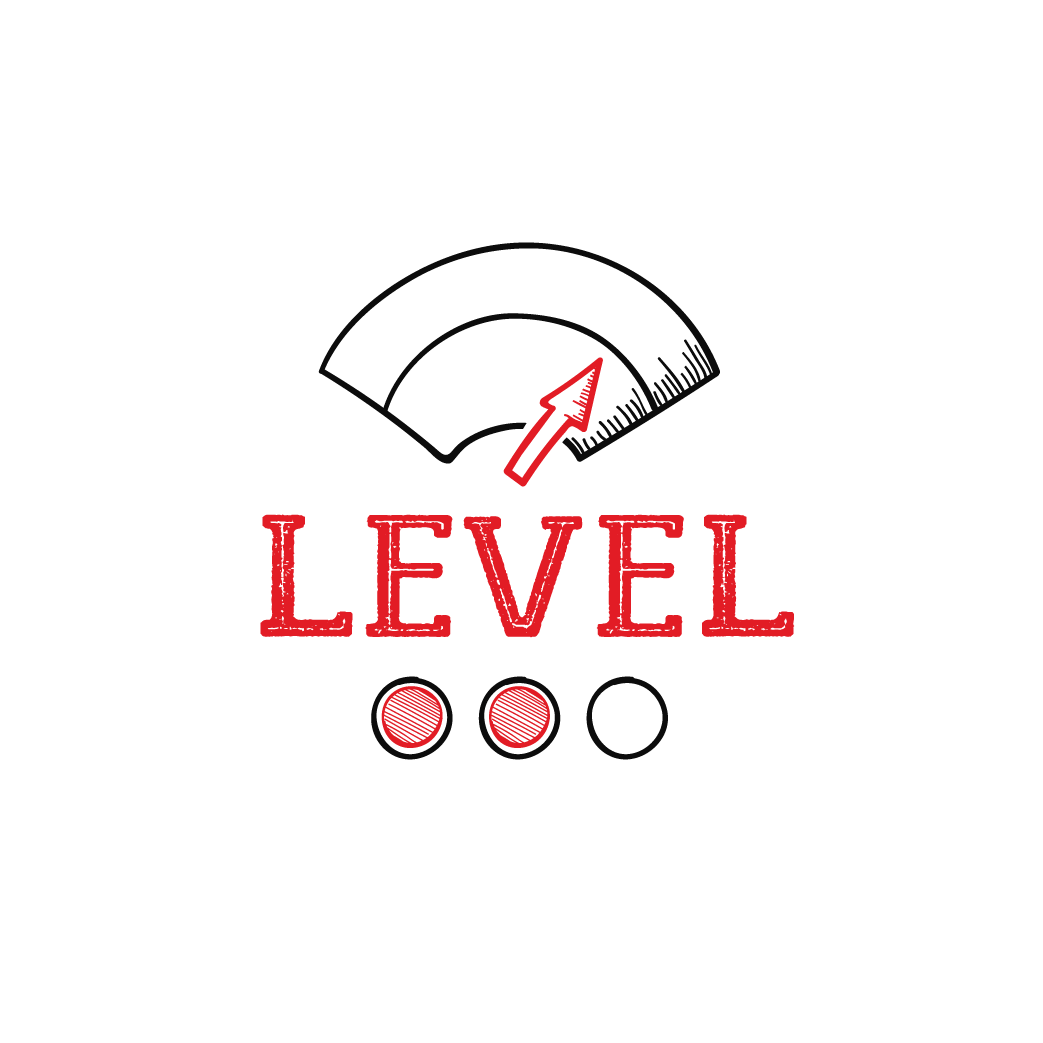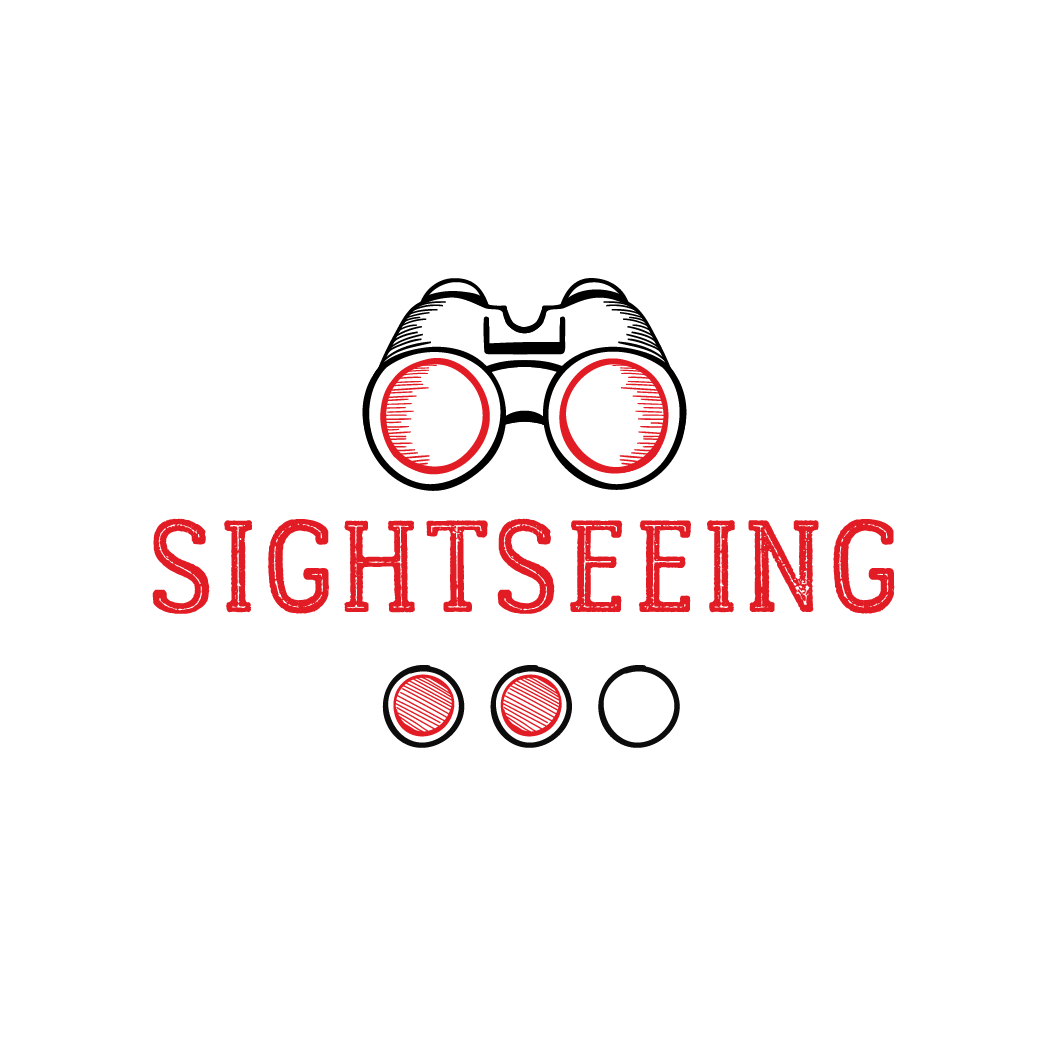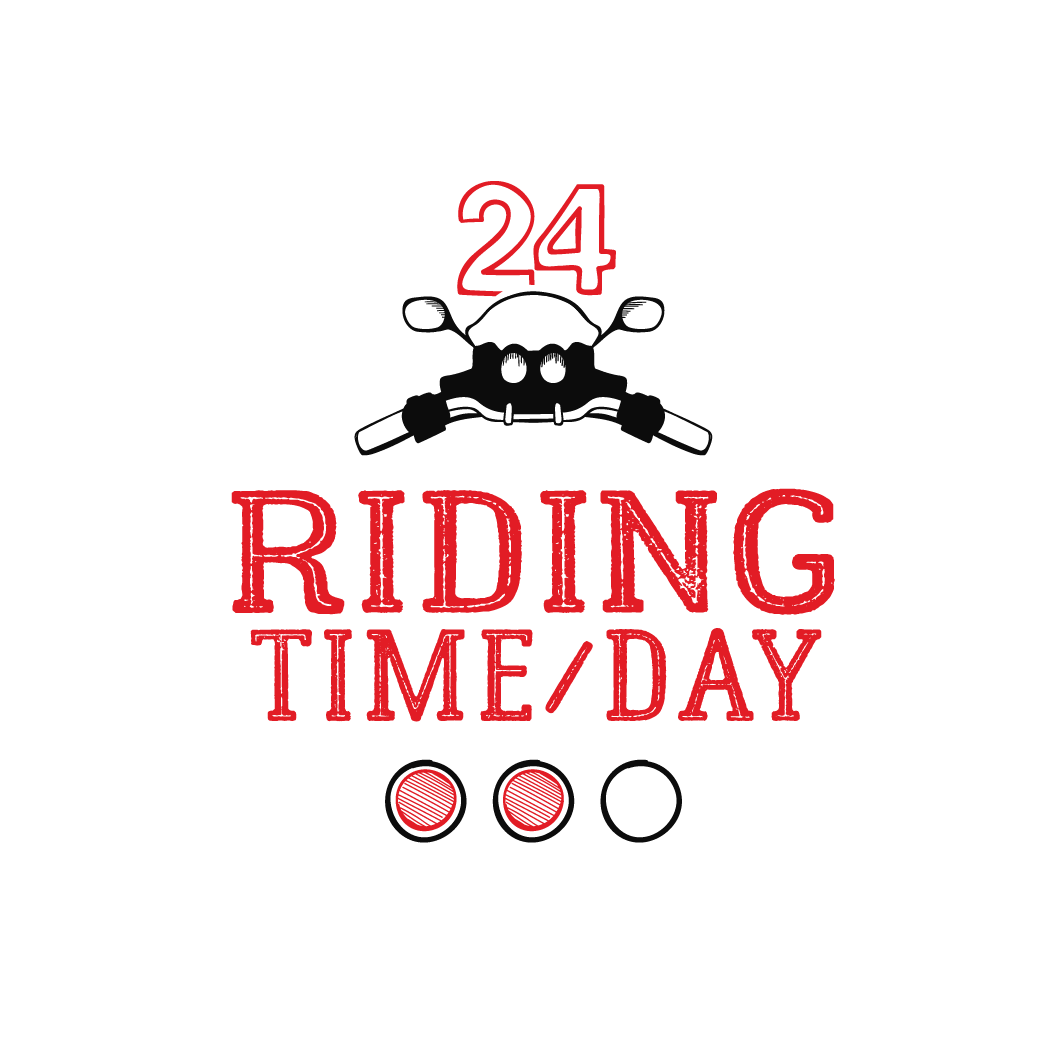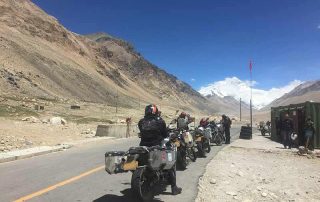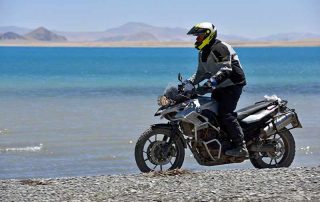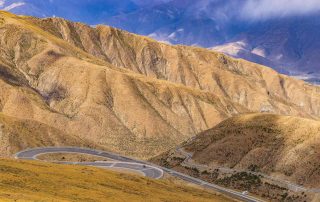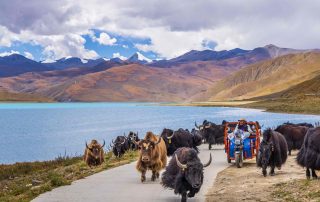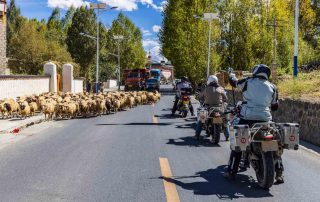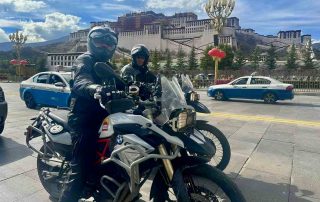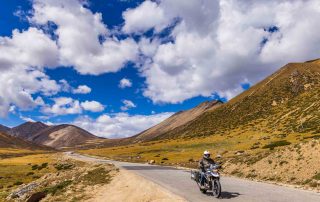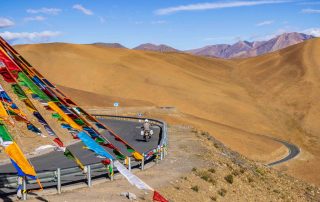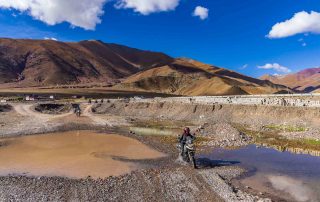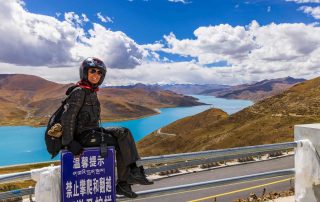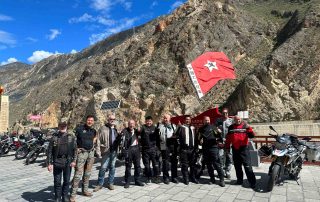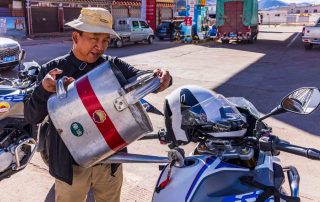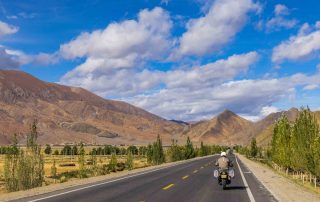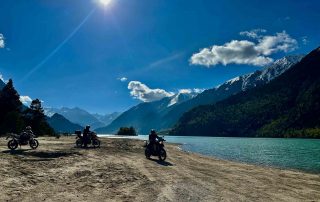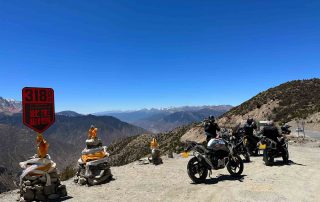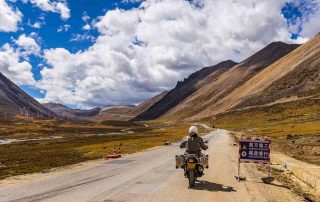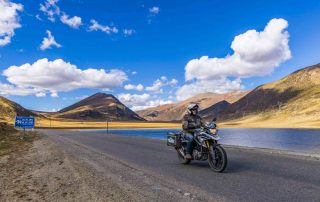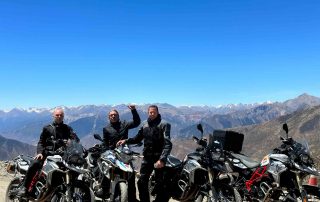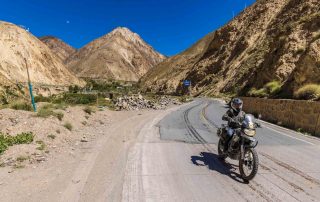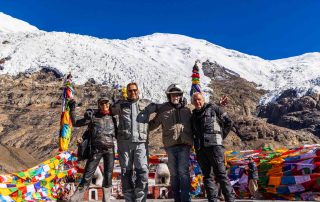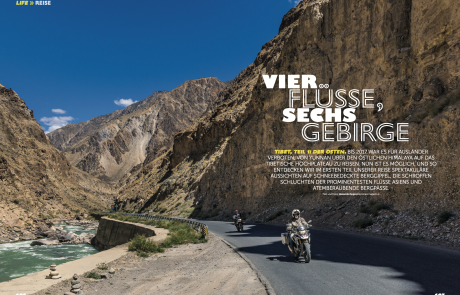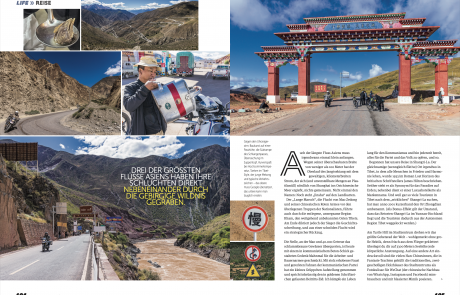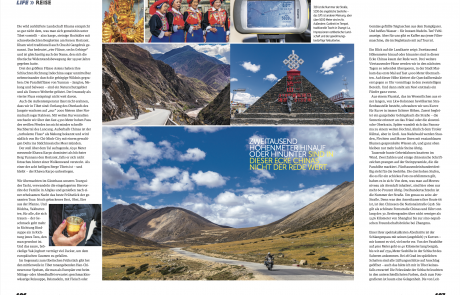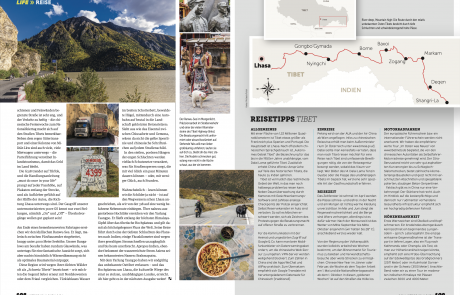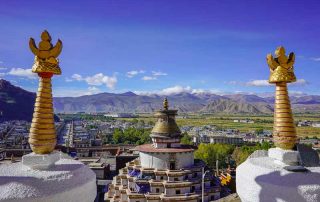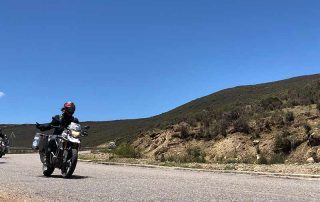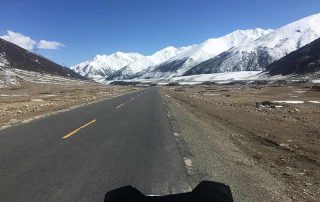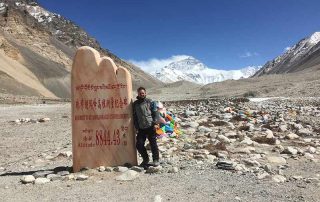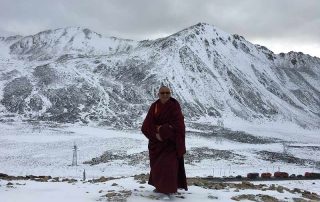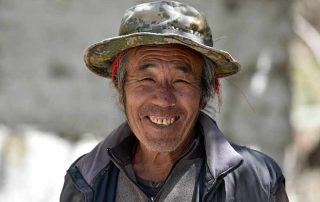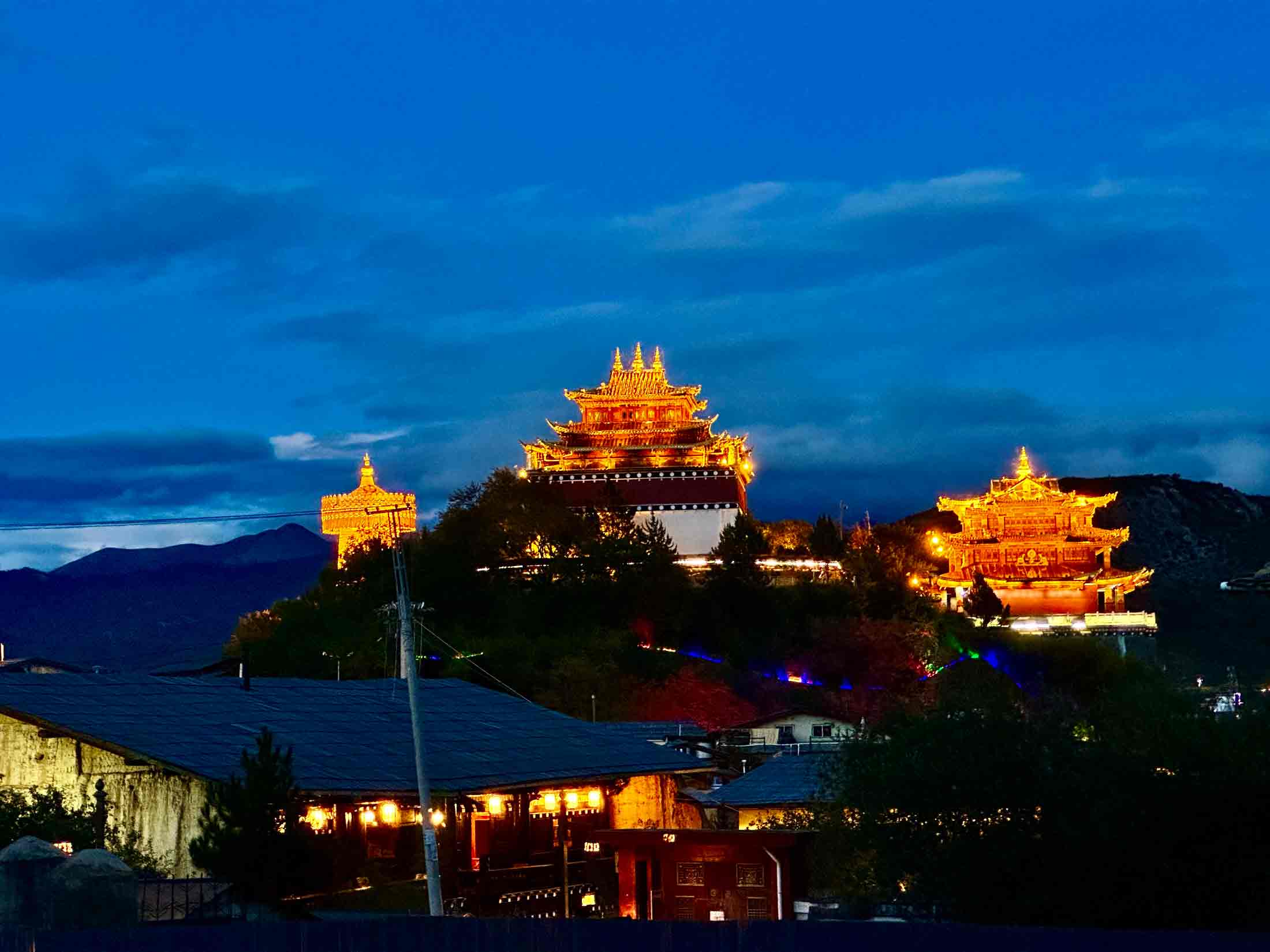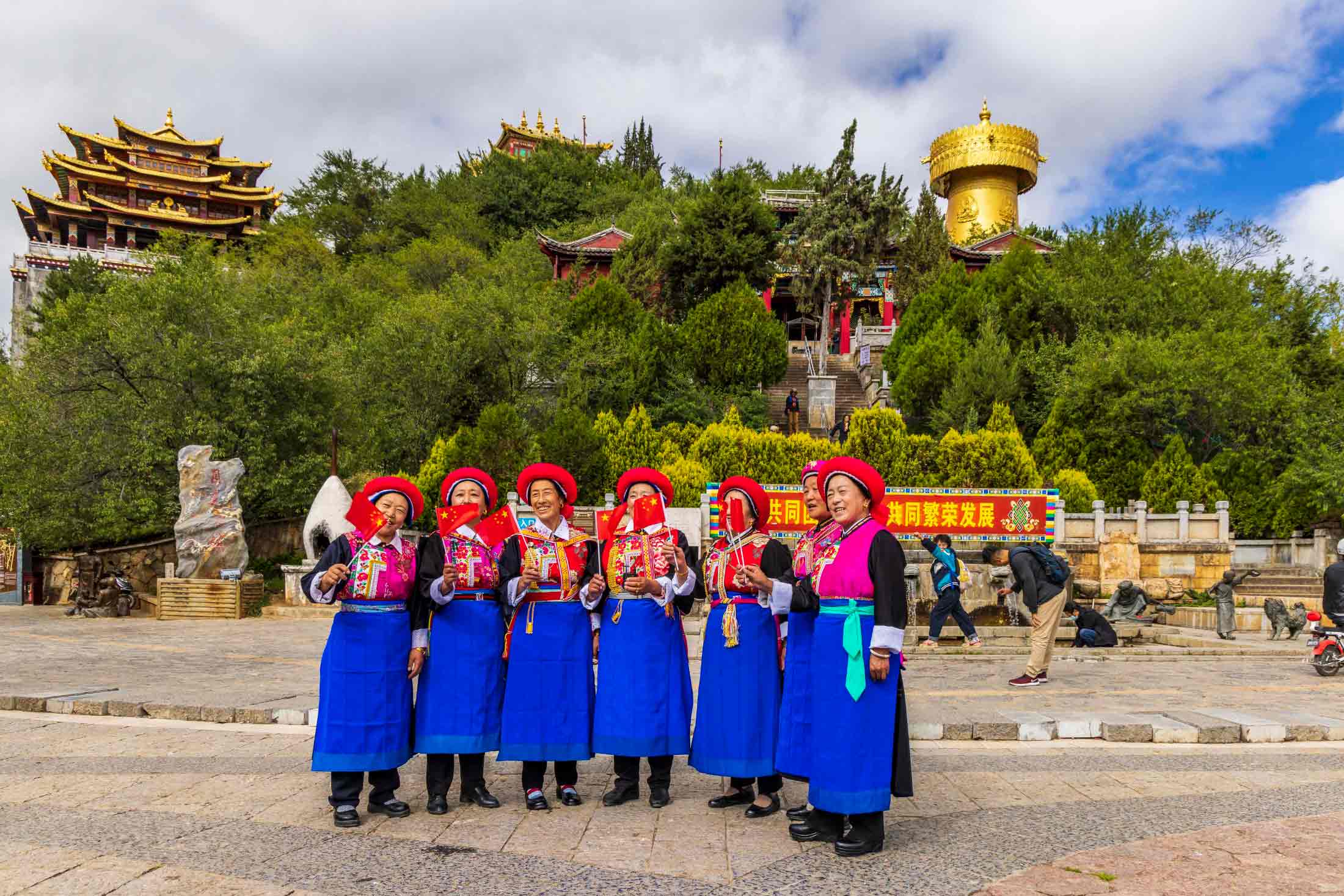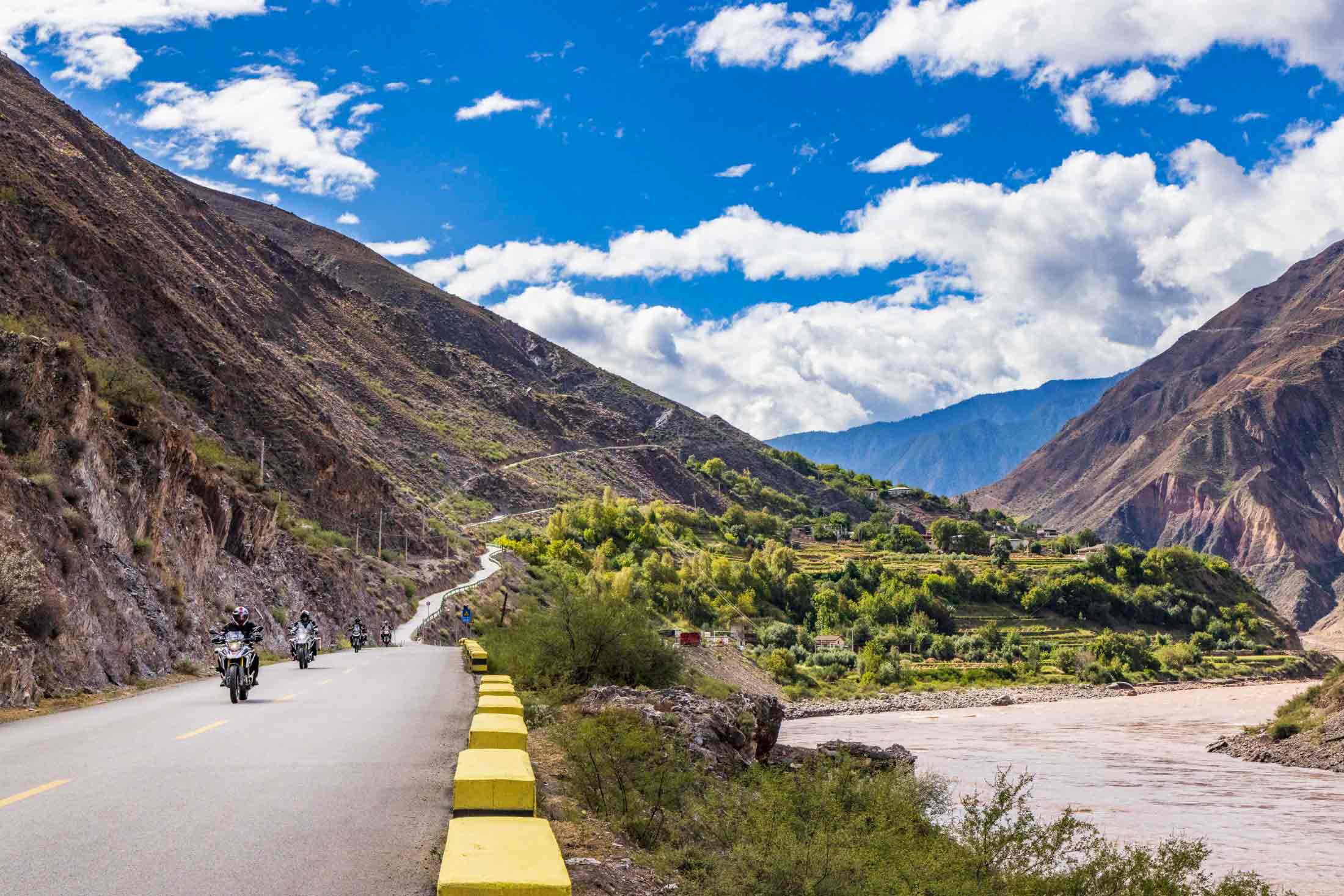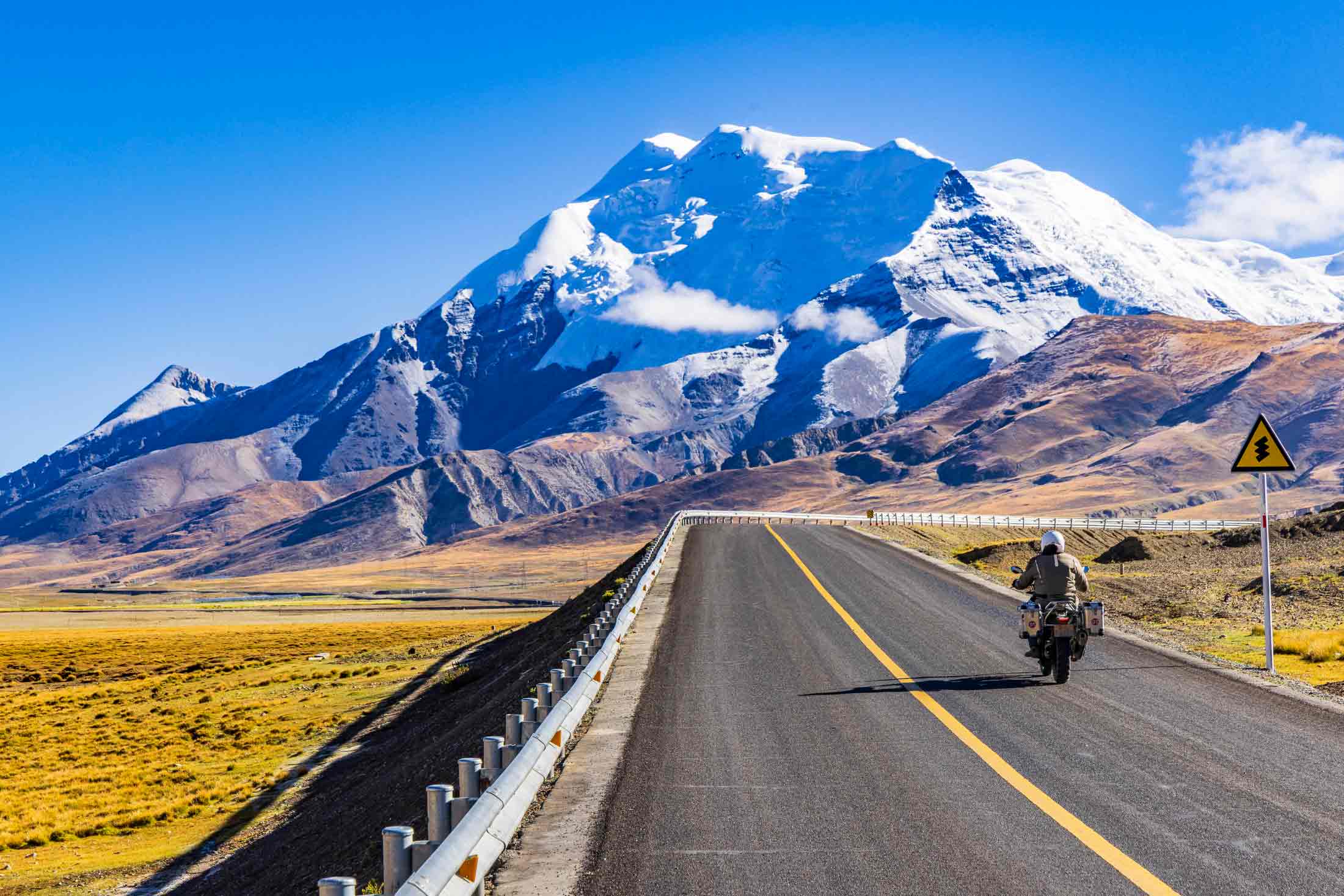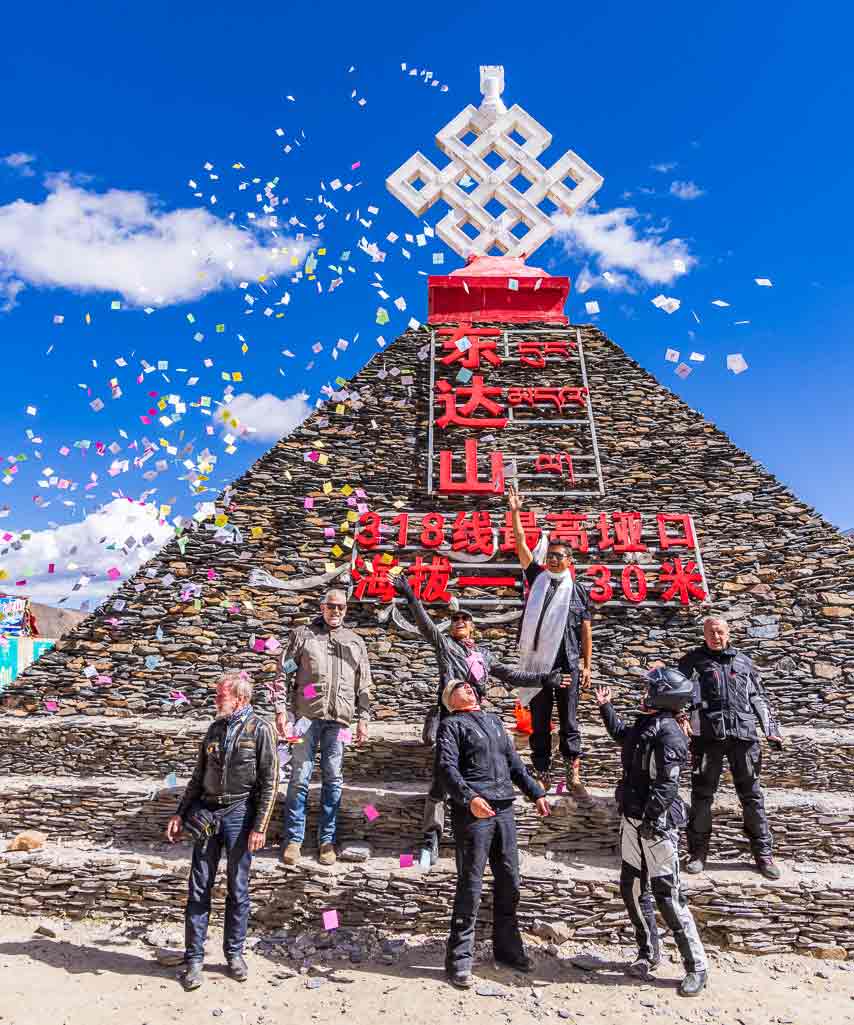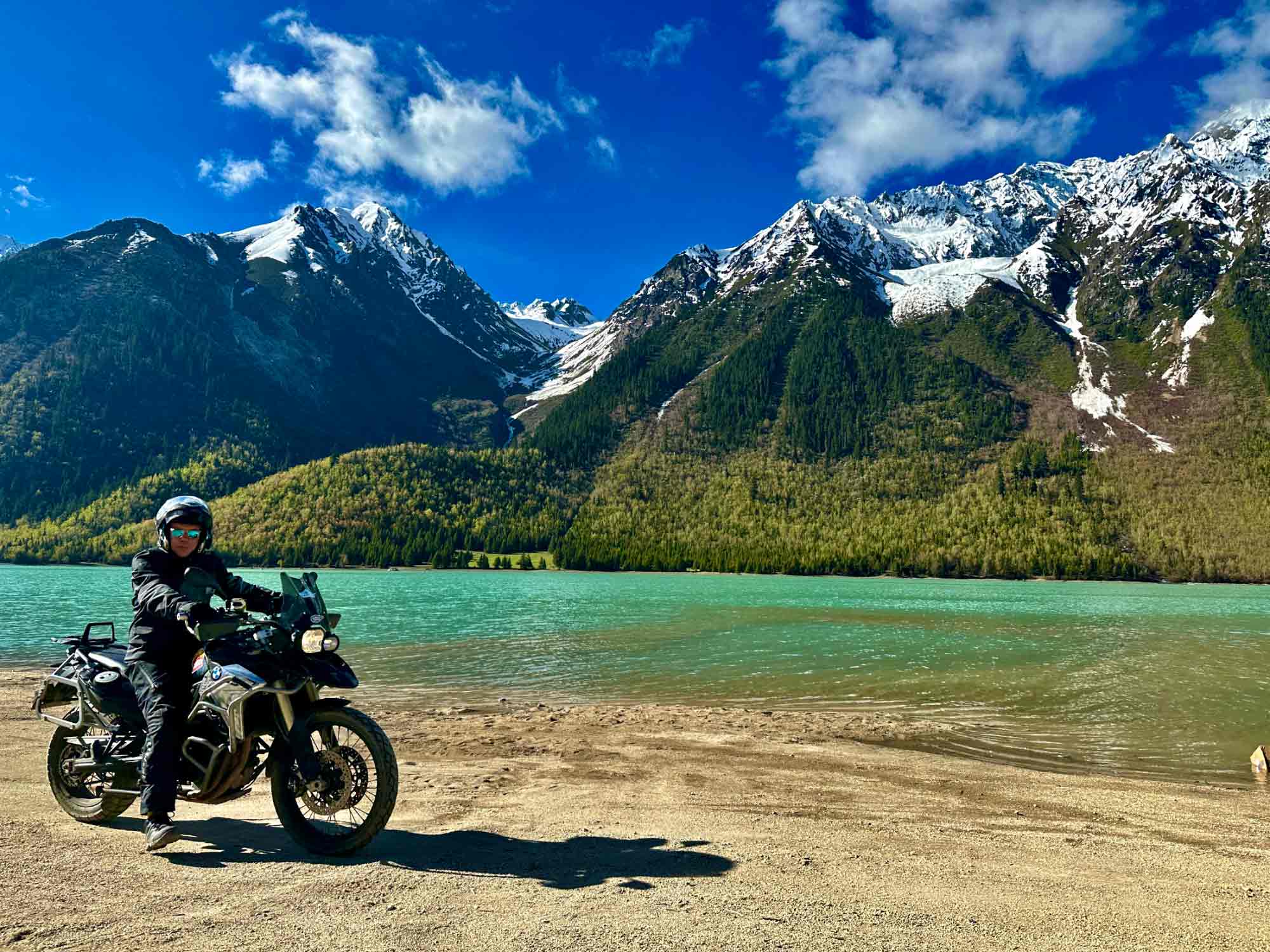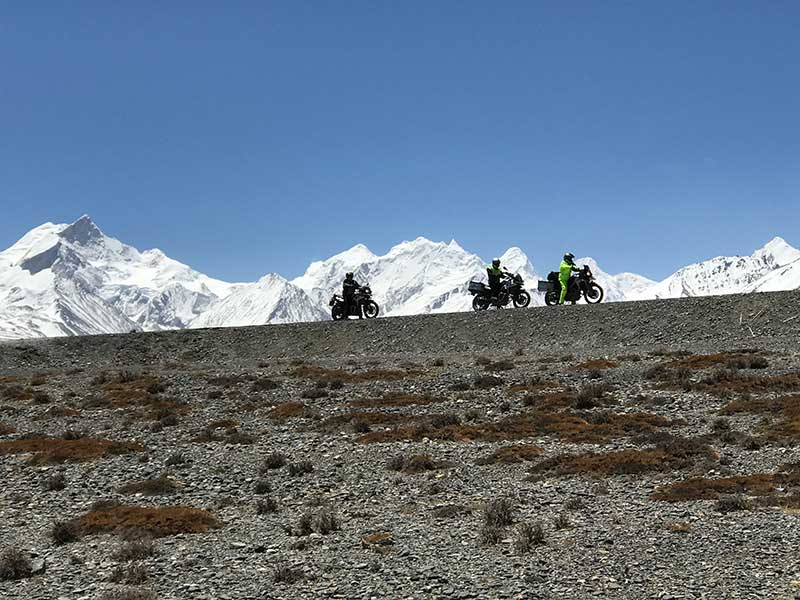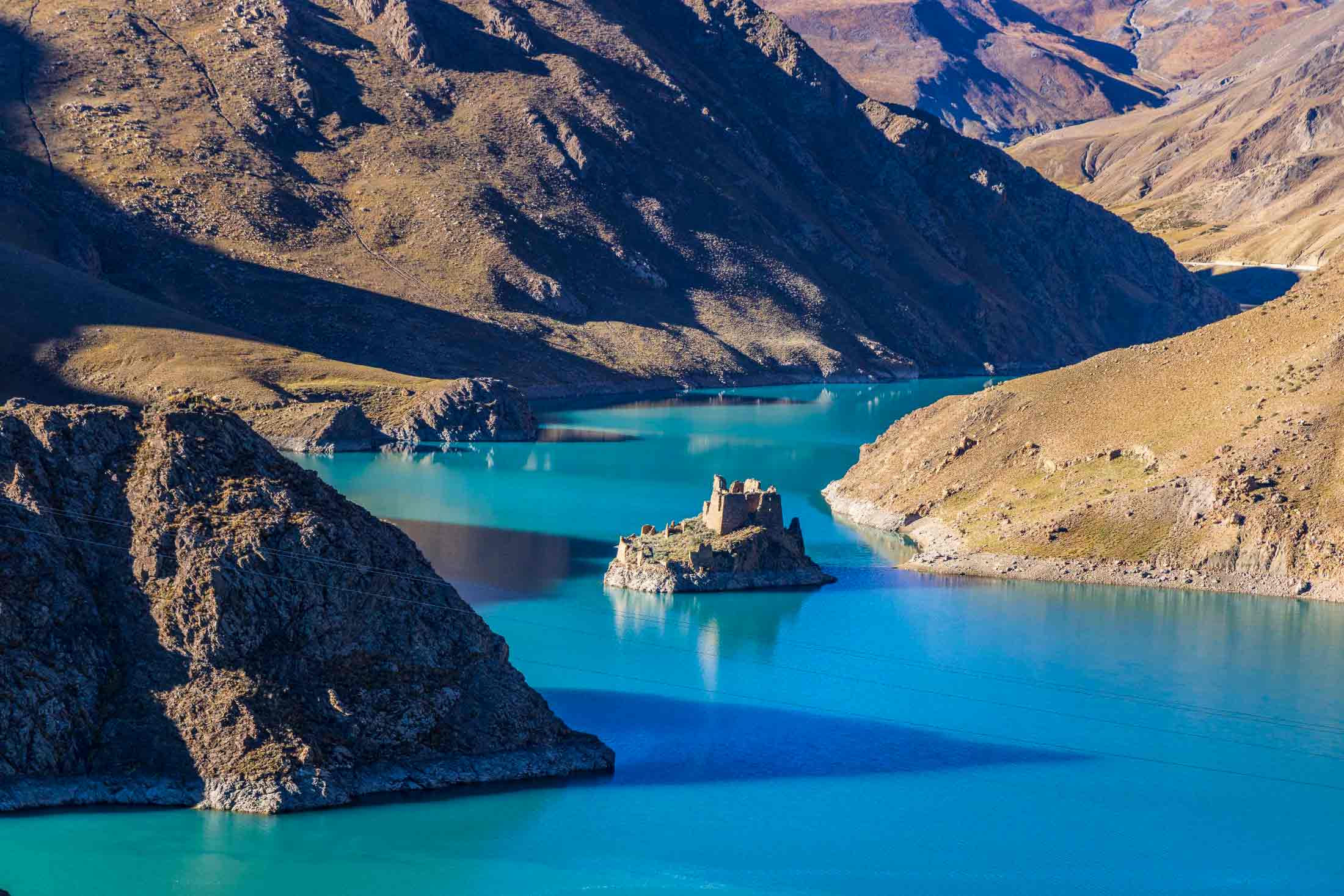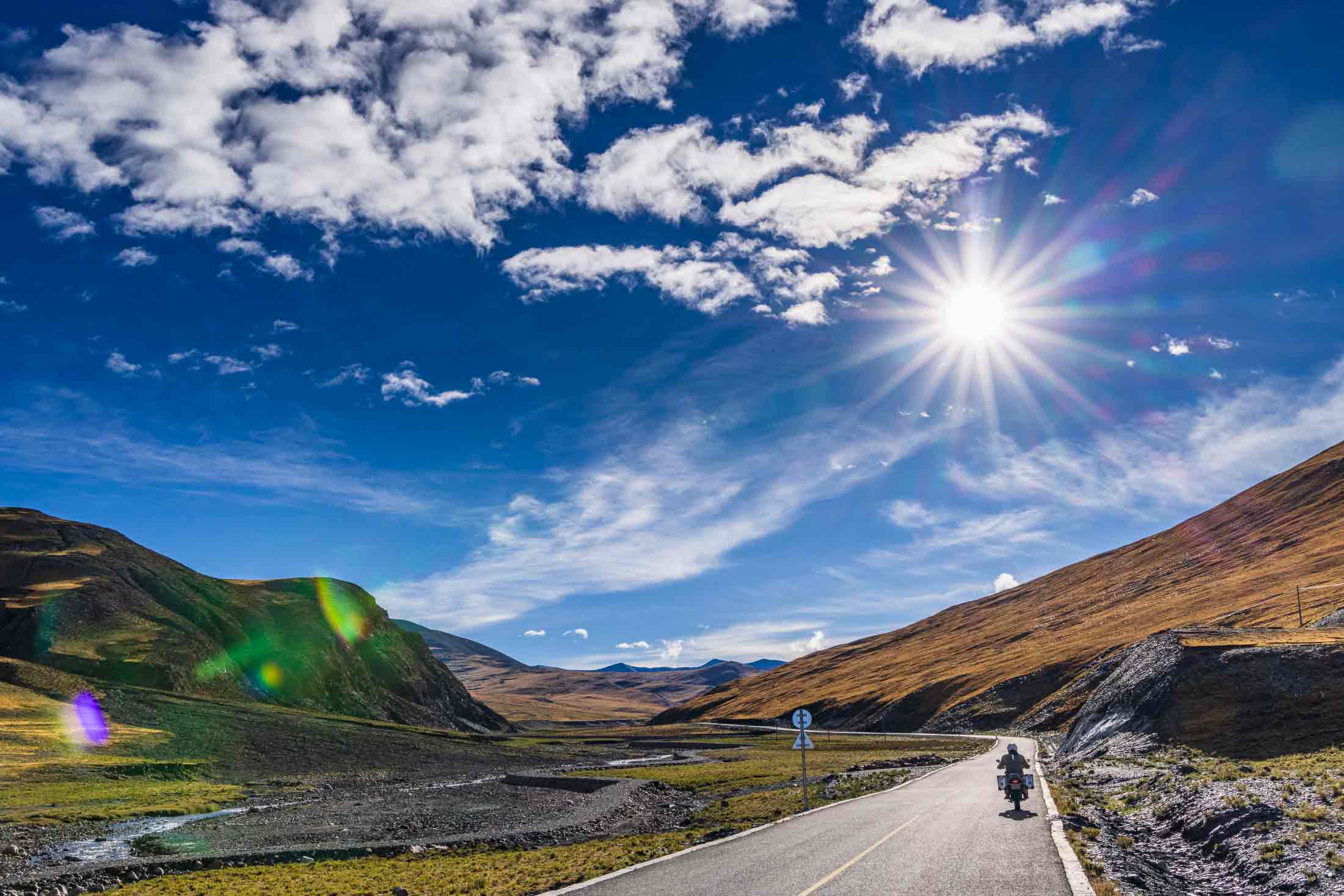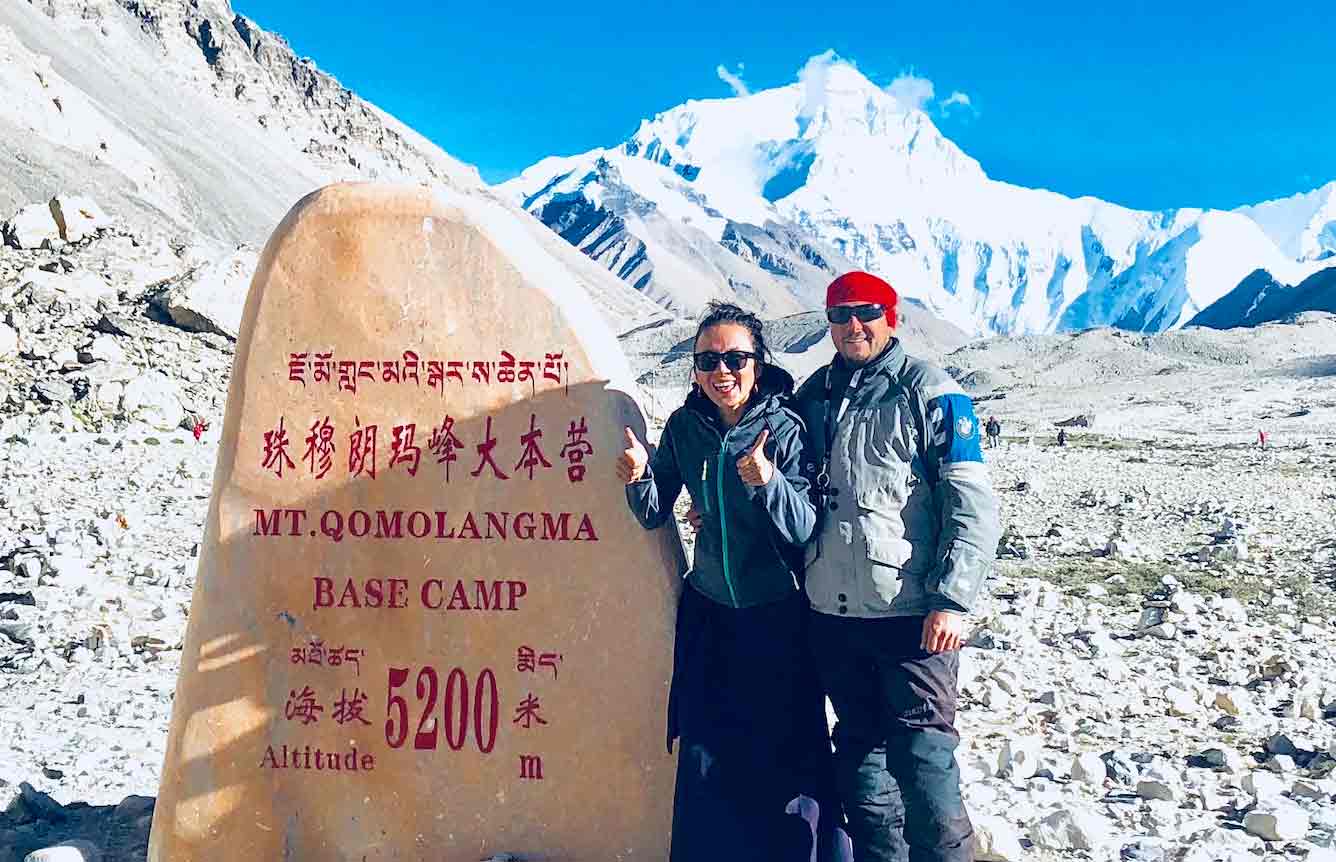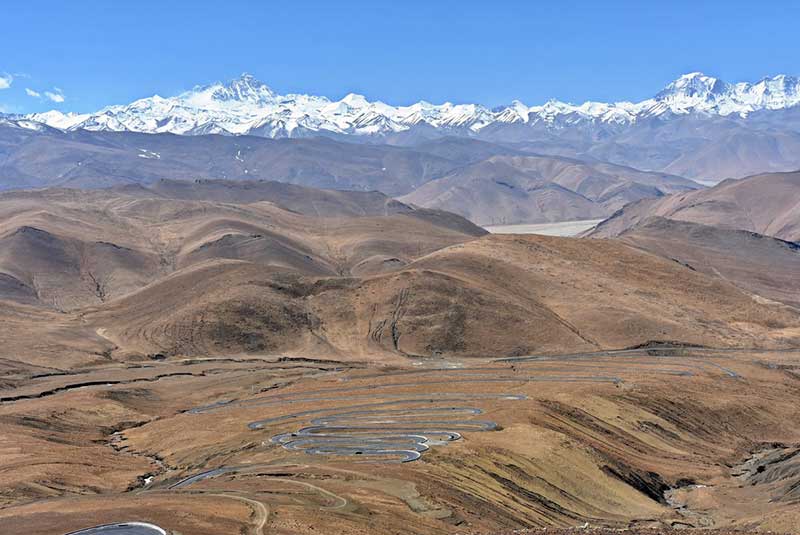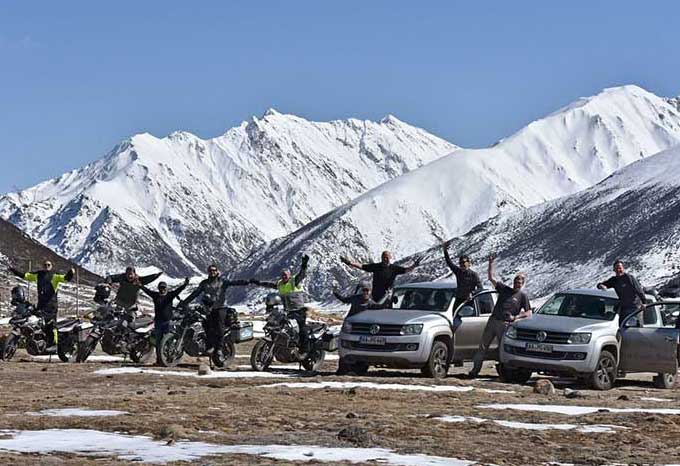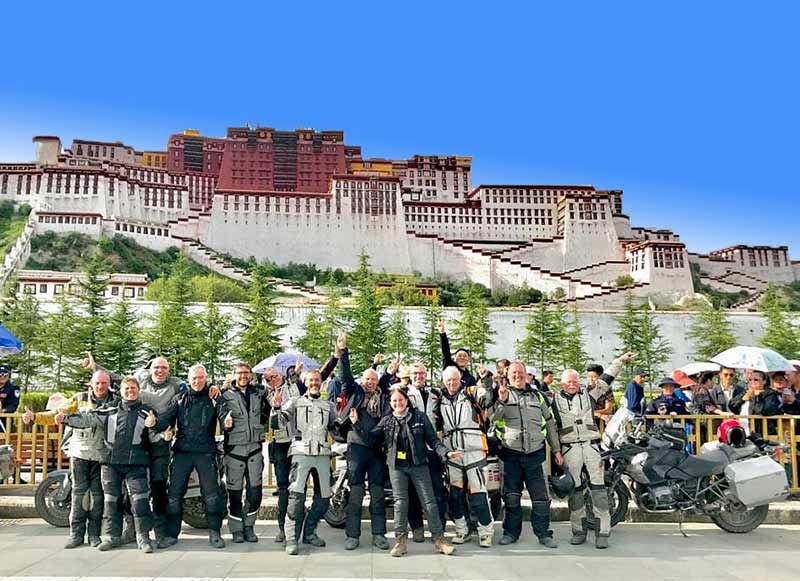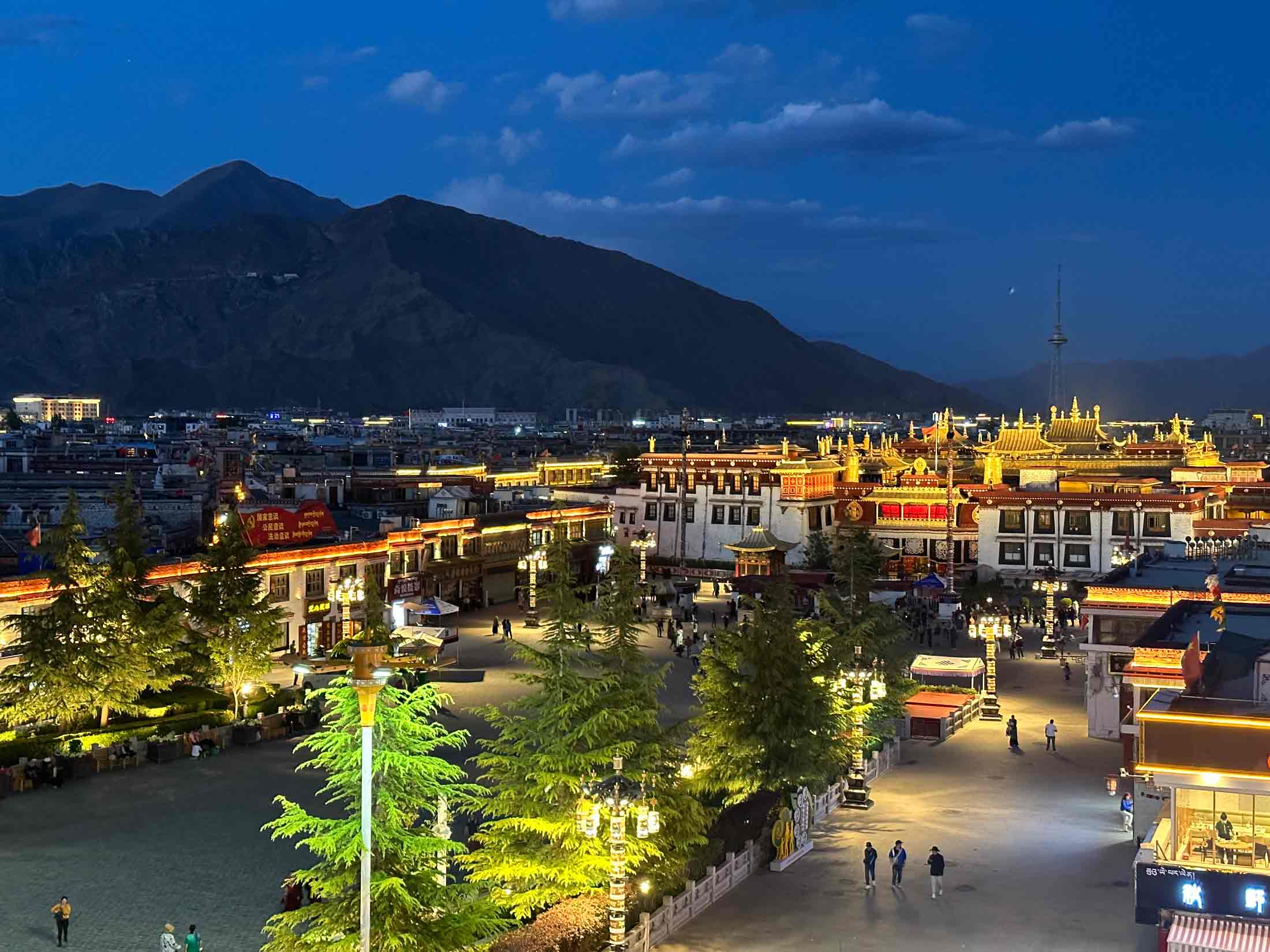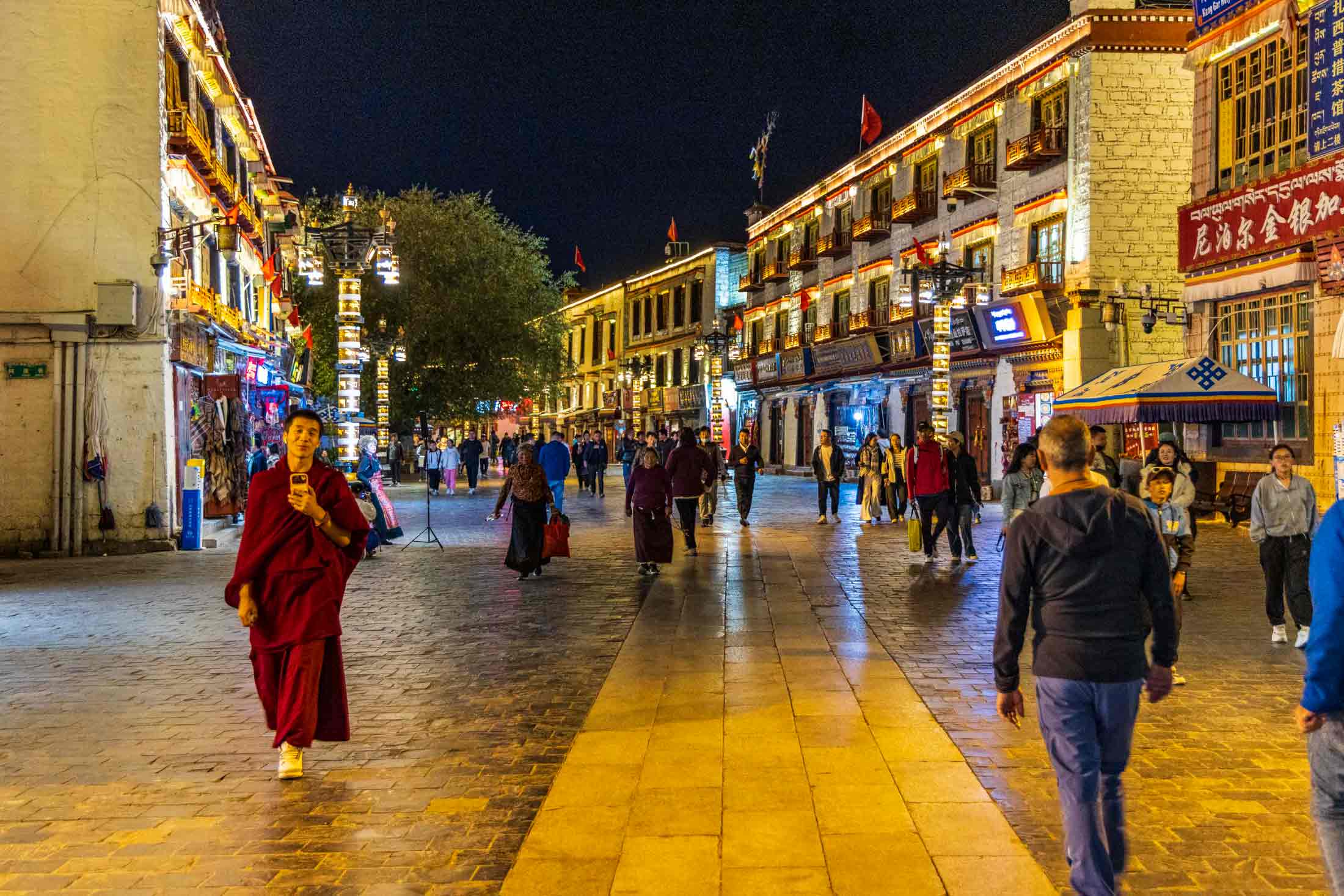

AT A GLANCE
Go East, Young Man Motorcycle Tour Itinerary
Questions & Answers
You will definitely want to bring your riding suit with protectors and a helmet. You will also need motorcycle boots or lighter riding shoes and gloves. While your gear should be breathable in hot climates, you need to be ready for anything at high altitudes and in the Himalayas. We recommend winter gloves, warm socks, liners for jackets and trousers, a scarf and face protection. Rain gear is a good idea if your riding suit is not waterproof.
Please note that we do not hire out clothing. We believe that your own riding gear will fit best and thus give you the best protection. If you forget anything, we’ll find a solution, however. We often have spare gear with us, or we can point you in the direction of a shop.
We always recommend that you take out travel insurance to cover costs incurred if you need to cancel the trip due to illness or other reasons. When shopping for travel health insurance, make sure the policy covers the potentially high cost of medical evacuation to your home country. Both forms of insurance can save you a lot of money in an emergency and we recommend them unreservedly. In many countries, your national motoring organization can provide the coverage you need.
Riding two-up is almost always possible. In difficult terrain or on rough tracks, every passenger has a guaranteed seat in the support vehicle to keep things relaxed for both rider and pillion.
Yes, all passengers have a guaranteed seat. In bad weather or challenging riding conditions, they can switch to the support vehicle at any time – and back to the bike when conditions improve.
Groups generally consist of 8 to 14 riders and 2 to 6 passengers. The minimum number of participants is 6 riders.
Our European tour guides are skilled motorcyclists and inveterate travelers who love India. They’re resilient in the face of stress and know the history and culture of the regions they cover. Our Indian mechanics are experienced Enfield specialists who all speak English and are happy to help with any technical problem, great or small.
A stand-in rider is always available. More information on our travel concept is available here.
You will need your passport, national driving license, international driving license and flight ticket. Please be sure to make photocopies of all of your important travel documents and carry them separately. They can be invaluable in an emergency.
All riders must have a valid motorcycle driving license issued in their home country. An international driving license is also required. Be sure to contact the relevant authorities in your home country well in advance for more information on obtaining an international driving license.
Simple street maps are often available locally. The best road maps are available from the German publishers Reise Know How and Nelles. These are only available in specialized bookstores or online.
Your baggage will be carried by the support vehicle. Please don’t pack too much – remember: less is more. From time to time, we’ll have to carry our baggage over short distances to the hotel. Baggage is not insured, so please be sure to purchase your own baggage insurance for the trip if necessary. Your personal items for the day are best kept in the saddlebags or your daypack. Tank bags – including magnetic ones – can be used on the Enfields, but we don’t provide them.
A travel day normally begins at 8 am with breakfast. Around 9 am, after a short briefing by the road captain, it’s time for the day’s riding, the mileage of which can vary quite a bit. Plenty of time will be available for lunch and coffee breaks, of course. Depending on the day’s mileage, we’ll reach the destination hotel between 3 and 4 pm.
Since our tours vary considerably, we may also hit the road at 8 am on high-mileage days – which is also nice, because then we have the whole day ahead of us.
In the wake of the earthquake in Nepal in 2015 and road construction in many parts of the country, the journey from Kathmandu to Lhasa has not only become time-consuming, but also dangerous. The entire route from Kathmandu to the Chinese border at Rasua Gadhi on the Nepalese side and Gyirong on the Chinese side is currently a construction site. The road surface consists of sand and large stones, and it’s extremely dusty. Numerous trucks also use the road. Not even enduro enthusiasts would enjoy the ride. We would also have to factor in the time-consuming border procedures on the Nepalese and, in particular, the Chinese side, that can take up to a full day.
Starting and ending the Tibet Motorcycle Tour in Kathmandu would thus mean putting up with the same route and dealing with comparably long border procedures twice on the same tour. Regardless of what other organizers may think, that’s not our idea of a fun Tibet Motorcycle Tour. The road conditions and waiting times would not exactly be the highlights of a ride to Everest Base Camp. In our opinion, it makes no sense to start and end a tour with a focus on Tibet as its highlight in Kathmandu. And besides, a fleet of state-of-the-art bikes is waiting and ready to roll in Tibet.
If you want to discover the best Nepal has to offer – and not just see it as a transit country – we recommend our Magic Nepal Motorcycle Tour, or our spectacular Mustang Motorcycle Tour. On our Tibet Motorcycle Tours we hardly ever take the same road twice – we only have the most beautiful routes, and we don’t waste precious time at borders. We want you to remember your ride to Everest Base Camp as a true highlight.
Depending on the specific tour, the following bikes are available for our motorcycle tours in Tibet and China: The BMW models G 310 GS, F 800 GS and R 1200GS, as well as the Shineray X5, a 400cc single-cylinder enduro.
The deposit for the motorcycle varies depending on the choice of bike:
Shineray X5 400: EUR/US$ 500
BMW G 310 GS: EUR/US$ 1,000
BMW F 800 GS and R 1200 GS: EUR/US$ 1,500
Tour Concept by RC Hendrik
